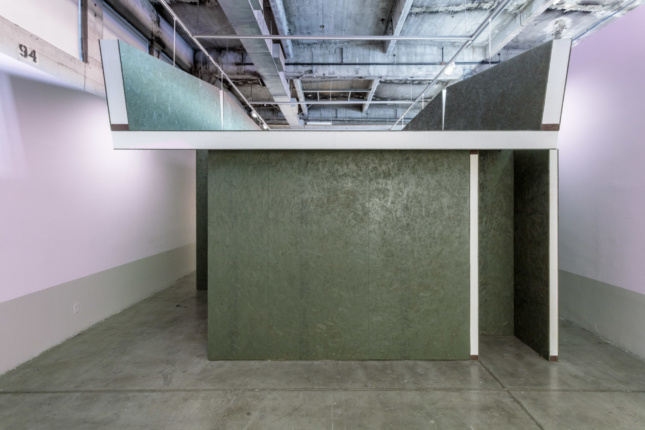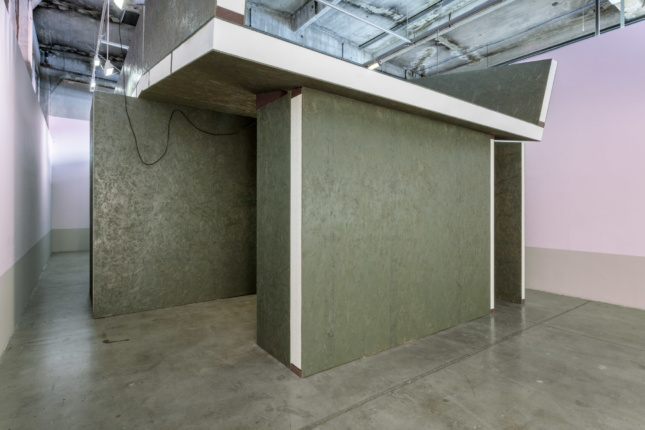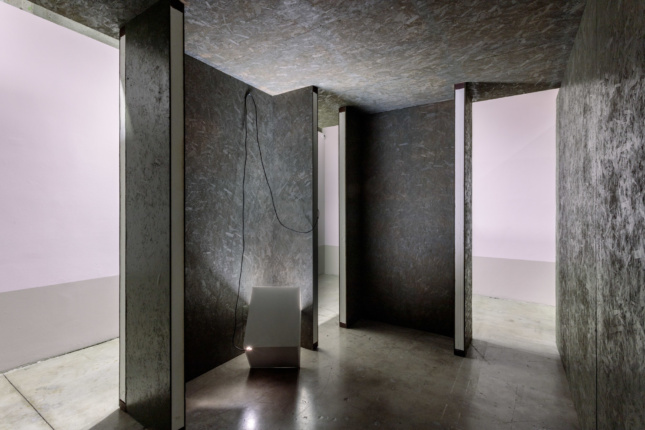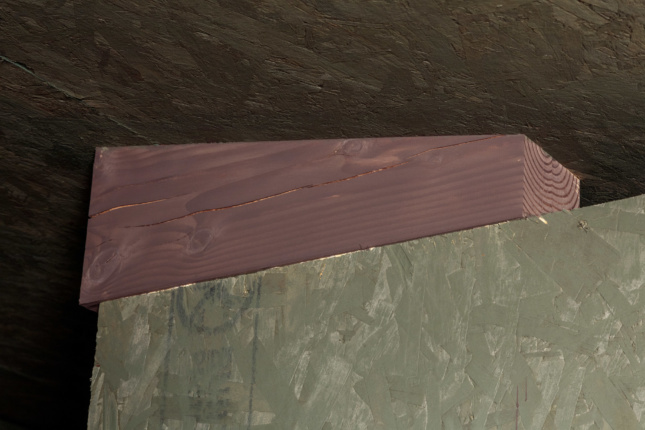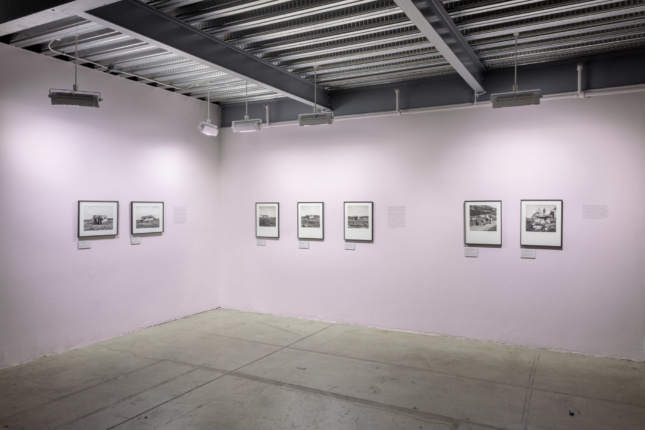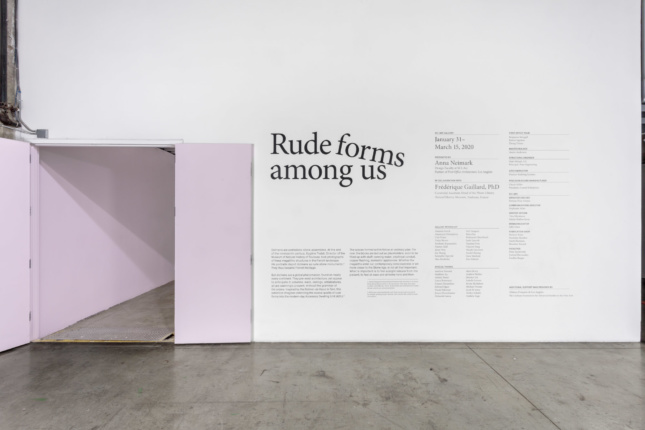For her first project within the SCI-Arc Gallery, Anna Neimark has produced a space that blurs the lines between exhibition and installation. Upon entering Rude forms among us, visitors may first be struck by the latter appropriation of the space as they encounter a dark, hulking structure occupying the majority of the gallery’s floor space.
Before it was built at a full-scale within these walls, the installation was a proposal for an accessory dwelling unit (ADU) Neimark designed as co-founder and principal of Los Angeles-based architecture firm First Office. “Without too many explanations,” the gallery text reads, “we happen upon a rude form that brings us to a time that is at some remove from our own. Its resolution is low, not high. Its joints are butted, not mitered. Its gaps are shimmed, not sculpted. It alludes to the architecture of forgotten narratives, eroded tectonics, and muddled grammar.”
While this is indeed the “rude form” the title warns us about prior to entry, we are quick to learn that, above all, the structure is forthright—both in its construction and interior circulation. The deliberately slapdash method of assembly, in other words, exposes its inner workings to align it with other buildings of expressive tectonics with little to hide.
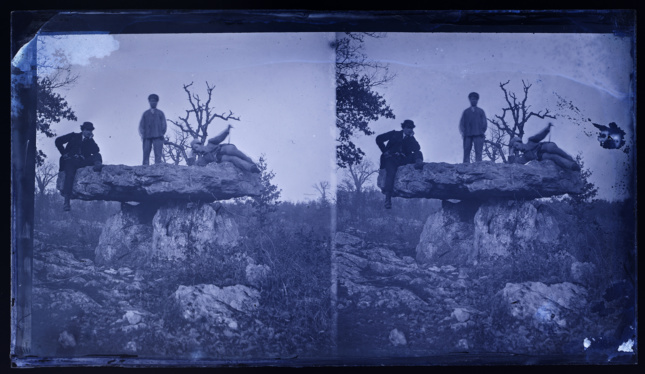
Yet the object is especially forthright in its design origins, thanks to the imagery and text along the gallery walls—the exhibition half of the space. Neimark collaborated with Frédérique Gaillard, head of the photo library at the Natural History Museum in Toulouse, France, to curate and transport photographs of the Dolmen de Vaour, a megalithic tomb made of upright stone, that were taken by 19th-century naturalist and explorer Eugène Trutat. Like other ancient stone structures, the Dolmen de Vaour has stood the test of time despite its peculiar configuration, and the faithful documentation provided by Trutat over 140 years ago appears to revel in the tomb’s inherent awkwardness.
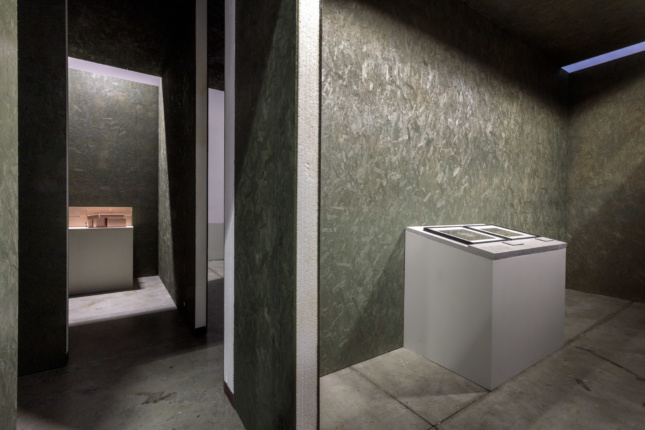
Even the ADU’s interior, devoid of the domestic functions originally planned for it, is treated as a gallery space of its own. One area contains two “portrait” photographs of the Dolmen de Vaour on a pedestal, and another places a miniature model of the ADU itself below a faraway spotlight that elevates its clumsy composition to holy heights.
Altogether, Rude forms among us advocates and builds on the legacy of timelessness that is not of symmetrical structures and illusions of precision, but rather that of imperfection and the apparent honesty that it can project. Rude forms among us was created in partnership with the Muséum d’histoire naturelle de Toulouse, The Graham Foundation for Advanced Studies in the Fine Arts, and the Alliance Française de Los Angeles, and will be on display until March 15.






